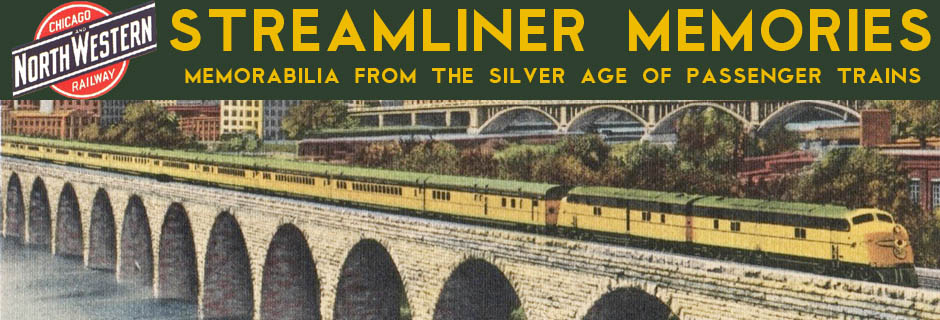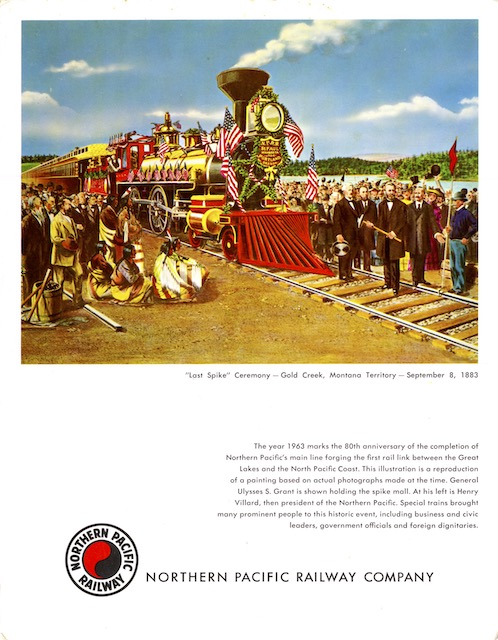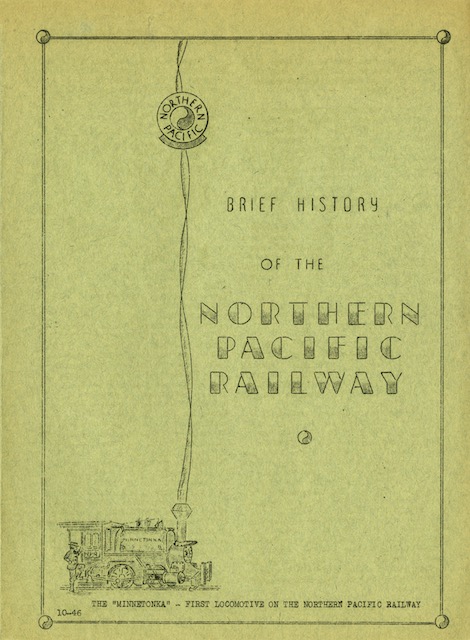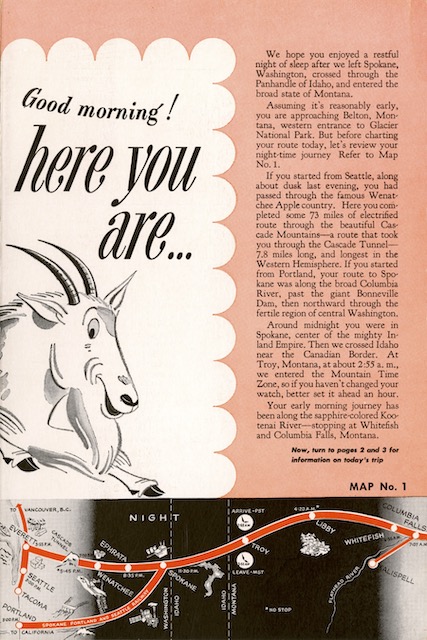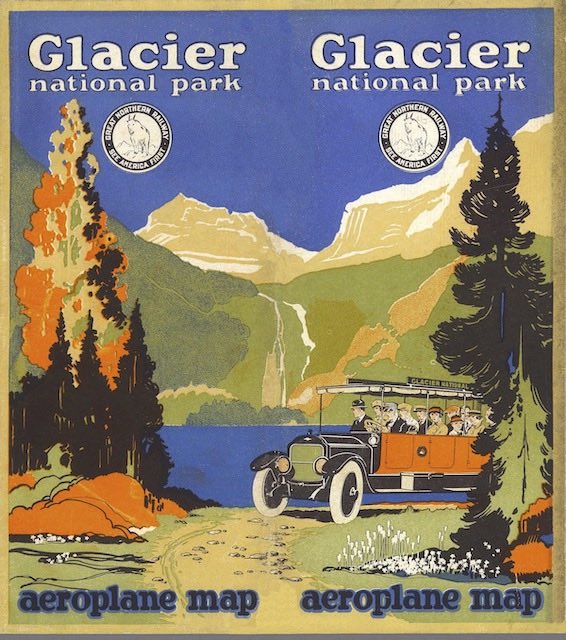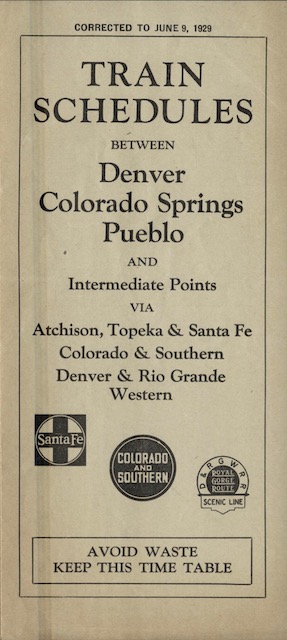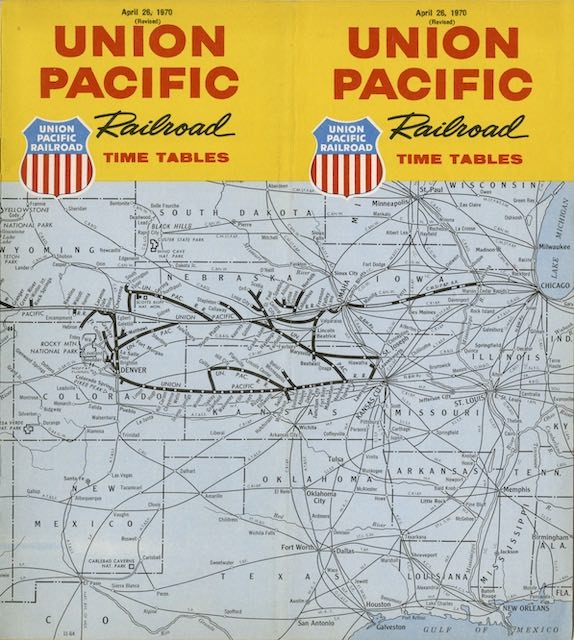Introduced in 1905, the Oriental Limited was the pride of the Great Northern. This 1911 booklet says that the train had “recently been augmented by the installation of entirely new equipment throughout.” The new cars had electric lights, wide vestibules, “vacuum cleaning machines” operated by a uniformed attendant whose sole job was to keep the train “neat and clean,” and an on-board telephone that only worked when the train was in the Chicago, St. Paul, or Seattle stations. Twice a day, the train received telegraphed news bulletins of the latest world events.
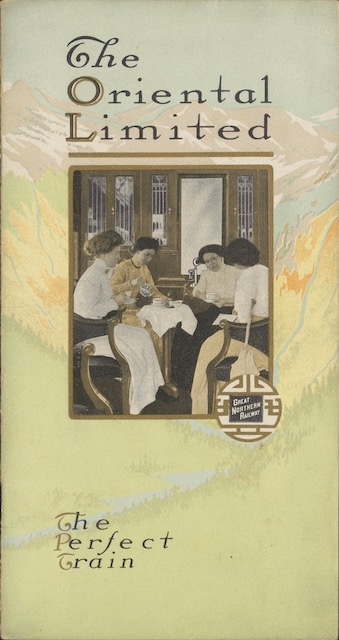 Click image to download a 5.3-MB PDF of this 20-page booklet plus map.
Click image to download a 5.3-MB PDF of this 20-page booklet plus map.
“Many people, especially ladies, feel the need of some light refreshment during the interval between luncheon arid dinner,” says the booklet, and Great Northern provided this in the form of an afternoon tea every day between 4 and 5 o’clock. This tea service was available to sleeping car passengers at no extra charge. Continue reading →
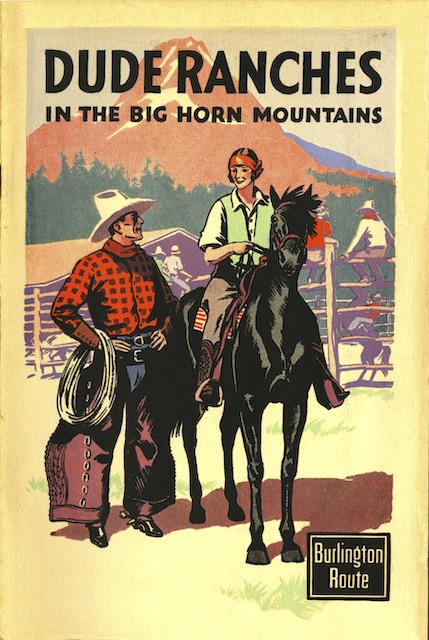 Click image to download a 16.6-MB PDF of this 60-page booklet.
Click image to download a 16.6-MB PDF of this 60-page booklet.